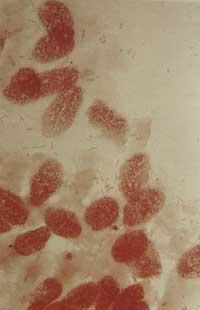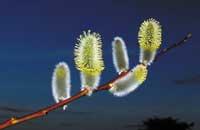Risks of air conditioning systems
2001/04/01 Sarasua Etxeberria, Arantxa | Umaran Sanchez, Adelaida Iturria: Elhuyar aldizkaria
Air and health
In summer, when we take the car back from the beach and squeeze the air, that's a blessing! Or if in the autumn working days, when there is a big fargo out, there would be no system to cool the office air! But beware, the air we breathe is directly related to health.
Diseases never related to air conditioning are of 3 types:
- Irritation of eyes and throat, runny nose, headache, and other unspecific symptoms.
- Allergies.
- Respiratory tract infections.
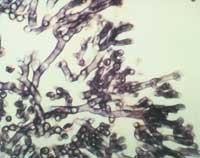
Through the respiratory system, we continuously penetrate the air in our environment to obtain oxygen. However, in addition to oxygen, we include particles in the air, such as allergens and infectious microorganisms. Fortunately, the protective pathways in the mucous membranes of the respiratory system (hairs, cilia, mucus, etc.) keep most of the particles in the air out. However, these defenses can be overcome and as the level of air pollution increases the risk of getting sick.
BioaerosolsAir always has dust, pollen, fungal spores, bacteria, viruses, etc. What can be modified is the concentration of these particles. Artificial ventilation uses closed circuits and successively emits particles within the room. On the other hand, most systems use water to clean and cool the air and, once conditioned, separate fresh air and push it into the room by pipes. Numerous species of fungi and bacteria that inhabit the area conform to moisture and common organic matter for reproduction.
The ducts of the ventilation systems, especially when they have curves or stops, accumulate dirt (organic matter) and allow the growth of nearby microorganisms.
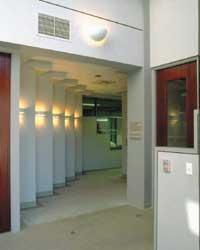
These microorganisms, after thousands of repetitions, are expelled at high speed inside the room forming bioaerosols. Bioaerosols are fine particles of microorganisms present in the air or its parts, responsible for the appearance of allergic or infectious diseases 1.
Sick building syndrome
It is called sick construction syndrome to the set of symptoms that occur between the staff of artificially ventilated offices: eye and throat irritation, runny nose, headache, skin conditions, fatigue, allergic rhinitis, infectious diseases of the respiratory tract, etc. Numerous epidemiological studies have tried to relate the discomfort of this staff to the type of ventilation system and the concentration of microorganisms and other particles present in each office. Since the definition of sick building syndrome is too broad, some researchers believe that artificial ventilation cannot be solely responsible for all these diseases, even if it has influence 2. However, the allergic crisis and some outbreaks of infectious diseases of the respiratory tract have a direct and significant correlation with air conditioning systems 3.
Allergies
Other components of the beings that inhabit around are able to activate our immune system. This is beneficial when the response of the system is adequate and measured, as it serves to prevent the penetration of microorganisms and, therefore, to avoid infectious diseases. In some people, however, the response to these products is excessive and harmful.
Particles that cause such responses are called allergens, and people who tend to have these inappropriate responses are hypersensitive or allergic. When allergens breathe, the mucosa of the respiratory tract of allergens increases and they must suffer from rhinitis or asthma symptoms. The tendency to these allergies is, on the one hand, consequence of what is written in the genes, but, on the other hand, symptomatic crises require the inhalation of specific doses of allergen.
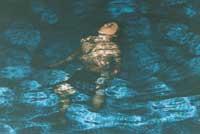
There are many types of allergens, some are microbial (fungal spores, bacterial toxins, etc.) and many animal or vegetable accessories (pollen, hairs, etc. ). The latter are inert, not proliferable in the air, while microorganisms reproduce rapidly within ventilation systems, especially in the presence of organic matter. Consequently, if the ventilation system is polluted, more and more microbial allergens will take off, increasing the concentration of allergens in the air.
Some studies have linked home air quality to children's asthma flare-ups, such as artificial ventilation systems, which are a risk factor for causing allergic symptoms. As far as possible, allergy sufferers should try to remove air from contaminated areas and remove spores from fungi, animal hairs and all sources of other allergens in their homes.
Infections
If the microorganisms spread by the ventilation system are able to live, there is the possibility of infecting man and causing infectious diseases, so the differences that we must analyze to assess these risks are virulence, host status and dose.
Virulence
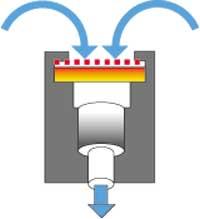
Microorganisms that are usually isolated in air samples are listed in Table 1. Many species of fungi and bacteria can be found in aerial systems, but not all have the same ability to cause respiratory tract infections.
The most virulent parasitic microorganisms of the human being are accustomed to living from our neck and have demanding requirements to reproduce: vitamins, temperate temperature, much and sweet organic matter, etc. Therefore, to live in freedom, at room temperature and with little food have party. Species that live free in the environment have learned to take advantage of any type of matter and have adapted to changes in temperature and humidity. Therefore, in general, those who colonize ventilation systems will be mostly saprophytic microorganisms in the area, with little capacity to cause diseases or, what is the same, low virulence. However, the appearance of infectious disease is an indicator of the relationship between two beings: the microorganism and the host, the human being.
Guest Status
Everyone has an immune system that protects against infections. Its functioning depends on factors such as age, nutritional status and various diseases. There are several defense mechanisms to develop in young and older children, but defects or stains often appear.
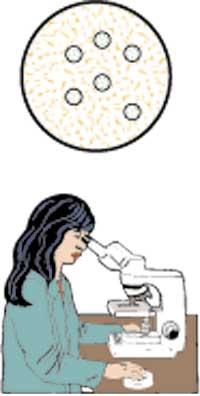
Lack of nutrition, alcoholism, infections, diabetes and, above all, the deficiencies of the immune system (escape, neutropenia, etc.) are determinants when assessing the risk of inhalation and disease of microorganisms spread by the ventilation system. Therefore, although systems are the same, the risk is very different in homes, offices, hospitals or other special areas.
When a host's defenses are diminished, a low-virulence microorganism can cause disease. This microorganism is an advantage or opportunist. Among the bacteria and fungi of the area there are some. The fungus Aspergillus is one of them, whose spores, dragged by air with dust, are everywhere, in houses, in schools, on the street or in hospitals.
Dosage
To produce infectious diseases it is necessary to breathe a minimum of different microorganisms according to the species. Thus, if in the air of a room there were between 10 and 100 Legionella per cubic meter, it would be difficult for the person inside to breathe the minimum dose needed to develop the infection. The fixation and proliferation of Legionella in the tubes of the air conditioning systems will cause the emission and extension of millions of bacteria per cubic meter. Therefore, people who breathe this air can easily breathe 7 the minimum number of bacteria needed to get legionellosis.
This concept of dosage is essential to understand how systems controls should be.
Areas of special risk
Some areas are particularly at risk for their presence, such as hospitals. People who are hospitalized often have some immunodeficiency due to illness or other, or due to violations of external mechanical defences such as skin and mucous membranes. Consequently, harmless street microorganisms, such as the Aspergillus fungus, can become a serious problem in hospitals due to increased sensitivity to infections of those present. The ventilation of the operating rooms is particularly controlled and numerous studies have been carried out to study the relationship between the operation of the ventilation systems of the operating rooms and acquired aspergillosis and other infectious diseases 8.
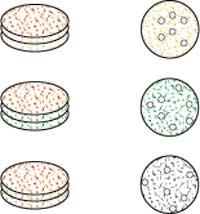
On the other hand, various human activities, by necessity or for leisure reasons, generate bioaerosols. For example, shaking manure poses the risk of taking off thousands of microorganisms it contains. Similarly, personnel working in the treatment plants, or in the dentists' consultations 16, have a high respiratory probability of bioaerosols and an increased risk of allergies and respiratory tract infections.
In spas the air is always humid, which increases the life capacity of microorganisms and increases the bacteria Legionella in hot water pipes. Therefore, since the number of microorganisms present in the air is much greater than in other places, for both customers and workers it will be easier to breathe the dose necessary to infect, despite being healthy. In this type of location it is necessary to control the air quality, measuring the number of fungi and bacteria present in the air, and in case of artificial ventilation, carry out the maintenance with rigor and systematic cleaning to avoid infections 9.
System maintenance
Ventilation systems should be designed to minimize curves and use easily cleaned materials. However, control of the air quality emitted by the systems is essential, as indicated in the following steps and images:
- The air from the ventilation system passes through a microbiological filter. The microorganisms present in this air will remain in the filter.
- They are then incubated in different cultural media, at a minimum temperature of 22 ° C for a week, so that bacteria and fungi present in the air grow and form visible colonies.
- Colonies are homogeneous populations of microorganisms from a single microorganism. Therefore, to count the spores or bacteria of the fungi that have remained in the filter, we should only count the colonies formed by them.
- The colonies of starry fungi can be identified under a microscope to differentiate the species Penicillium and Aspergillus.
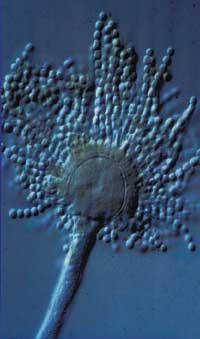
All studies measure the number of spores and bacteria in star fungi. In some cases it is worth studying the concentration of a specific species of bacteria. If a filter is obtained for this, they grow in selective cultural means that only allow the growth of the species that we want to achieve, as for example in the BCYE the concentration of the bacterium Legionella neumophila is measured.
Air research will be accompanied by research into the species of bacteria and fungi present on the surface of systems pipes. To do this, a certain surface is rubbed with sterile cotton at several points of the pipe and, after sowing and incubating the collected in the aforementioned cultural masses, the colonies located in a square centimeter are counted to know the number of existing microorganisms.
These controls can be performed systematically or once the systems are cleaned to check their effectiveness. In any case, the type and frequency of study in ventilation systems is determined by local use.
Microorganisms | Bacteria | Fungi |
Frequent opportunistic infections |
|
|
Manufacturers of spores, endotoxins or other allergens |
|
|

Gai honi buruzko eduki gehiago
Elhuyarrek garatutako teknologia




